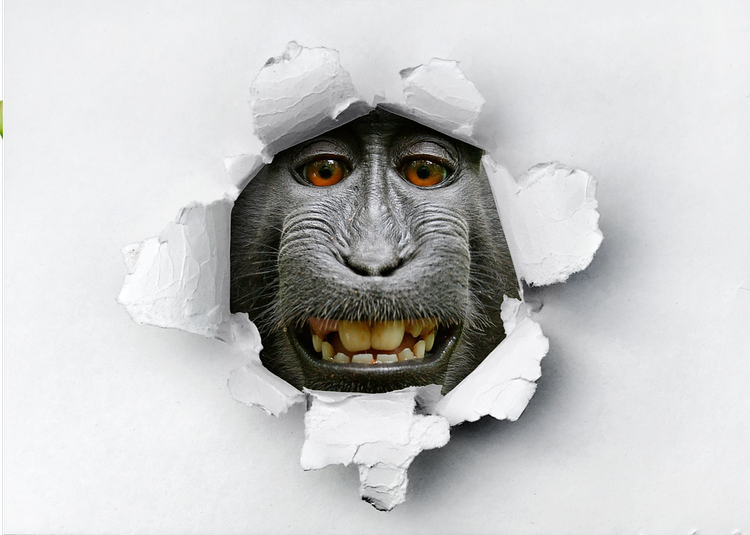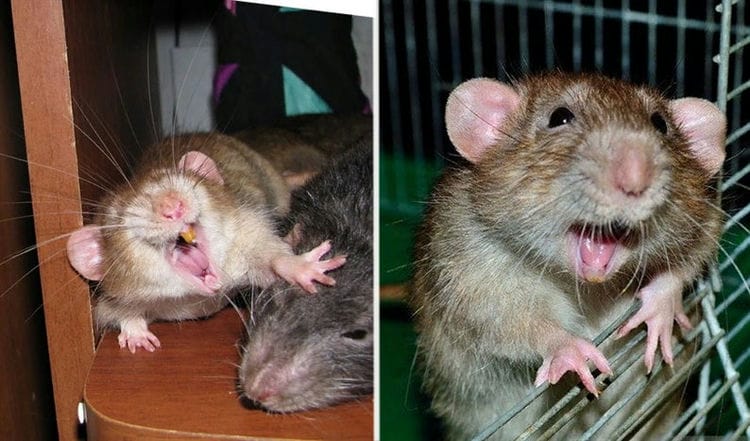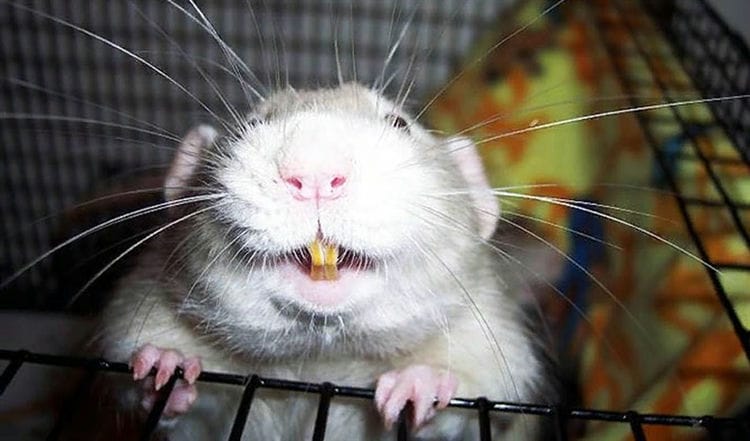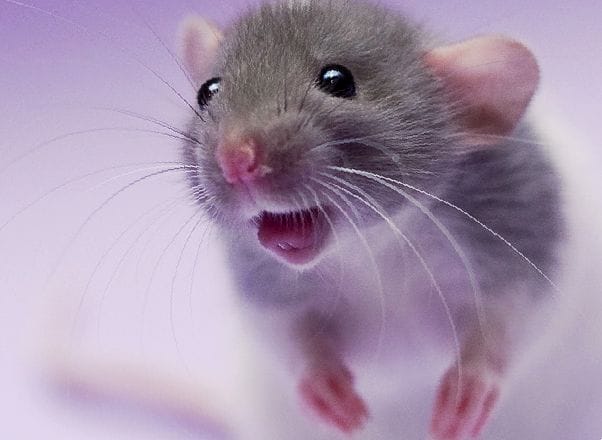What is laughter?
In order to determine whether animals are laughing or not, it is important that we understand what laughter really is.
Medically speaking, laughter is a physical response that people display in response to an external (or sometimes internal) stimulus and is characterized by audible contractions of the diaphragm and other parts of the respiratory system. This technical definition sounds rather strange, but laughter is just laughter, and we all know what it is, right?
Laughter can be divided into two main categories: social laughter (generated by a person’s “sense of humor,” etc.) and laughter that occurs in response to a physical stimulus (such as tickling).
The question remains: is laughter exclusive only to humans?
Not! Animals can laugh too!
Some animals exhibit external signs that may be associated with laughter. Since we know that humans can laugh, it makes sense that we can also observe the laughter of humanoid apes – chimpanzees and gorillas!
Chimpanzees and gorillas
Image source: picsart.com
There is a lot of anecdotal evidence that chimpanzees can laugh from time to time. Because they have such a striking resemblance to humans, it is fairly easy to recognize when they are laughing. This applies not only to chimpanzees and gorillas, he also to other monkeys, which can laugh like humans, while teasing and gesturing. Monkeys can also laugh at people when they do something funny or unusual!
Dolphins
Dolphins have a sense of humor. Image source: depositphotos.com
Dolphins are some of the smartest creatures on the planet. Consequently, the fact that they are capable of playing tricks on their kind shows that they have a sense of humor and that they can understand the meaning of comic situations. However, it is difficult to tell if a dolphin is laughing just by looking at it!
Rats
When tickled, rats emit a certain ultrasonic signal.
Rats can laugh too, but we only recently learned about it. While this sounds a little odd, it turns out that rats love being tickled. When tickled, they emit ultrasound, so we cannot hear it, but with the help of instruments in laboratory conditions, we can detect this laugh. However, the idea that rats can laugh is pretty funny in and of itself.
Other animals
“Ulybaka dog”
Many animals exhibit characteristic responses in various ways, showing noticeable behavioral changes in response to physical stimuli such as tickling. Some of these animals are camels, dogs, owls and penguins. But there can be many more species of animals that respond to tickling, however, their reactions may not correspond to our concept of laughter. In addition, it is quite difficult to analyze the reactions and behavior of many animals, either because of their appearance or because of their habitat (underwater, etc.). Scientists believe that some of these reactions are more likely to be an expression of pleasure in physical tickling. Most likely this will manifest itself in the form of positive vocalizations or expressions of joy, which is not at all the same as laughter, but close!
Stills from the movie “Dumb and Dumber”
Observations show that you don’t need to be “intelligent” to enjoy laughter.
From Darwin’s Research to the Present Day
In general, the idea that animals can laugh is far from new. She excited the minds of scientists several centuries ago – take, for example, the work of Charles Darwin “Expression of emotions in humans and animals”, published in 1872. He studied chimpanzees and other monkeys that made laughter-like sounds in response to tickling or caressing.
Decades later, similar studies at the University of Hanover in Germany once again confirmed that these sounds are indeed analogous to human laughter. The study also showed that primates have developed this ability for the past 10-16 million years.
Dogs are champions in laughter
More recently, in 2001, Animal Behavior Specialist Patricia Simonet highlighted the sound that dogs only play when they play. She described it as “a strained, forceful exhalation.” Using a spectrographic analysis technique, Simonet compared this sound to other sounds that dogs make during play: growls, whine, barking and shortness of breath. After analysis on a spectrograph – a device that measures sound waves, the sound of “laugh” showed a clear zigzag line, while with the sound of shortness of breath (the most similar reaction of a dog), it remained straight.
Even other dogs seem to recognize the “laughter” of their relatives and respond to it with pleasure. When Simonet played this tape to other dogs, some of them started looking for their toys, while others went in pursuit of their own tail. These reactions have been observed in both puppies and adult dogs.
Don’t be upset if you’ve never found your own dog laughing. The sound scientists call laughter is actually very far from human and more like the sound of heavy breathing.
Even rats can laugh
By the way, rats also have their own unique sound to express laughter. In the late 1990s, neuroscientists noticed that when tickled at the back of the head, rats make funny chirps. They had the same reaction when playing with each other. Further research revealed that this is a high-frequency ultrasound of 50 kilohertz, unlike any other.
I wonder if each animal has its own laugh? And in general, are they all capable of laughing? Scientists at the University of Portsmouth have explored this theory by systematically analyzing YouTube videos of animals. They noticed that many are very noisy and emotionally responsive to being tickled. While it may not be explicitly laughter in many cases, the sounds seem to be clearly associated with joy and positive emotions.
Although it is very pleasant to realize that our pets know how to laugh, the question involuntarily arises as to whom are they making fun of? It is better to leave the answer behind the scenes.
Animal smile
Many animals are capable of stretching their lips and showing their teeth. But only in a few animals this is a smile in our understanding. The person smiles reflexively or in a controlled manner. In the first case, first, the anterior zone of the hypothalamus is excited in response to the hormone of joy (dopamine), the flow of nerve impulses is transmitted to the limbic system, which is responsible for our emotions. As a result, the muscles of the face become toned, there is a stretching of the mouth and a contented squint of the eyes. With an adjustable smile, the hypothalamus is not automatically activated – a person consciously changes his facial expression, wanting to show his interlocutor his location or an artificial emotion (for example, when it comes to actors, clowns).
A smile is an innate form of human behavior, which is proved by smiling babies (such facial expressions appear reflexively in response to pleasure, and not in order to prove something to others)
But what about animal smiles? They can be identical to human ones only if they are controlled by the same mechanisms that we have (in biology, this is called the homology of the functioning of organs and forms of behavior). Excitation of the hypothalamus and limbic system, causing a change in the facial expressions of the animal’s face, occurs in only three animals:
-
Dogs.

The smile of a dog can arise reflexively and consciously (from the desire to please the owner)
-
Monkey.
![Laughter with fur: what animals can laugh and smile. What animals can laugh?]()
Monkeys are considered the most smiling among monkeys.
-
Rodents.

Stimulates a smile in an animal dopamine – a hormone of joy, which, for example, begins to be actively produced when an animal receives a treat
The rest of the animals can also smile, but in them such facial expressions will not mean a reaction to pleasure or a desire to show their disposition. The reason for their smiles is:
- A special structure of the oral cavity in which the lips are constantly stretched out in an arc (for example, meerkats, quokkas or stingrays).
- Sneezing or yawning, which, due to the structure of the muzzle, appears to be like a smile.
- Reaction to an unpleasant odor or stuffiness (there is a reflex wrinkling of the nose, opening the mouth, protruding the tongue and stretching the corners of the lips).
- The desire to scare off the enemy (in most animals, exposing their teeth is a warning “I will bite you if you don’t leave”).
The situation with monkeys is curious. Their smiles can mean the manifestation of both pleasure and aggression. The reason is that in these animals the same muzzle muscles are toned when all parts of the hypothalamus are stimulated. But its anterior zone responds to the production of dopamine, and the posterior zone to adrenaline, norepinephrine and cortisol (stress hormones).
Photo gallery: deceiving smiles of animals
Animal laughter
Laughter is a person’s reaction to humor or tickling, manifests itself in the form of involuntary movements of the muscles of the face (as with a smile), contraction of the muscles of the larynx, diaphragm, and abdomen. There is a sharp exhalation of air that engages the vocal cords, due to which rapidly repeating abrupt sounds (more often “ha”, “ha”, “ho” or their combinations) are heard. Only monkeys have a similar “mechanism” among animals. Other animals can laugh too, but they do it differently. For example, rats are still those humorists. But they laugh with the help of ultrasound with a frequency of 50 kHz, which the human ear does not perceive. By the way, in rodents, laughter is also a communication tool. They use it when meeting other members of their genus, when they want to attract attention and prove their health and leadership (sick and weak rodents do not laugh).
Laughing dogs are also common. But our four-legged friends laugh not because of a good joke or a desire to appear as “the soul of the company”, but only because of a conditioned reflex when acting on sensitive points on the body (similar to how we jerk our foot when tapping under the knee). This reaction is not obligatory – some dogs do not make sounds like laughter at all, while others burst into laughter even from a slight scratching of their belly or back.
Horses laugh for a variety of reasons – transmitting signals to fellow tribesmen, scaring off enemies, or reacting to tickling
Other animals and birds also make sounds similar to human laughter, but they do so for the following reasons:
- Scare off enemies.
- Imitate human laughter (for example, owls, crows, parrots are famous for this).
- They communicate with relatives, attract with loud abrupt sounds of the opposite sex (for example, horse calls during the mating season can be easily confused with loud laughter).
Video: a selection of animals and birds that play, smile and make sounds like laughter
Animals and birds can smile and laugh. But only these actions are not like how we rejoice. Most of all, laughter and smiles are similar to humans in dogs, rats and monkeys. The rest of the animals, in most cases, stretch the corners of their mouths, showing their teeth, and make laughing sounds in order to scare an opponent or enemy. At such moments, people should not be laughing – it is better to run away from the laughing animal so as not to receive a heavy blow with claws, horns or hooves.
What makes rats laugh
Tailed pets react to tickling in the same way as humans. If you tickle the back of the rodent’s legs, the area behind the ears or the belly, this process gives the pet pleasure and pleasant sensations. At the same time, cute animals squeak cheerfully, as if giggling with pleasure. Many owners even claim that when they tickle the animal’s tummy, a satisfied expression resembling a smile appears on the muzzle of their beloved pet.
But it is not only the tickling of certain parts of the body that makes the little creatures laugh. Studying the behavior of tailed animals in various situations, scientists managed to make an amazing discovery: some rats can laugh when they play with each other or watch the funny tricks of their fellow tribesmen. And, according to the researchers, ornamental rodents are more likely to choose “laughing” relatives as mating partners.
Communication sounds
With the vocal expression of sensations and moods, the tonality and nature of the sounds emitted by the rodent are diverse. For example, by screeching or chirping, your pet indicates that it is scared or uncomfortable. Hissing is used to express hostility and aggression. If your pet starts hissing, it’s best not to disturb him. He is able to bite the owner, moreover, this negatively affects the state of his nervous system. The animal will refuse food and may even bite the neighbors in the cage.
If the little tailed friend is in a good mood, then the newly-made owner, who did not previously have experience in handling decorative rodents, in practice will be able to personally see whether the rats are laughing. Laughter will be an expression of delight and joy from communicating with a person or relatives: characteristic sounds – the pet will squeak or grunt a little.
Reasons why the rat laughs
To make your pet smile, you can tickle:
- on the inner surface of the legs,
- footsteps,
- animal,
- behind the ears.
More often than not, your ward will react in the same way as a person. It is pleasant for the little rodent to be tickled, she enjoys the process, while publishing happy squeaks. One gets the full impression that the cute animal is giggling with pleasure. Many of those who keep decorative rats assure that this is the most real smile.
The little creature bursts out with joyful laughter not only from the tickling of sensitive areas on the body. Observing the behavior of a rodent in order to establish for certain whether rats can laugh, zoologists have made another striking discovery: the animals laugh when playing with their fellows or just looking at the tricks of others.
According to the researchers, a decorative rat is more likely to choose a relative who knows how to laugh and does it more often than others as mating partners.
How rats express laughter
The rat laughs when she is having fun, when she wants to demonstrate her joy or delight. Laughter in a rodent is a characteristic sign of happiness and pleasure from what is happening at the moment. But depending on its sound, the animal’s laughter can express completely different emotions – the rodent is able to laugh maliciously, sarcastically, etc.
How to visually recognize that a rat is laughing
Watching decorative rats is a great pleasure and entertainment. If someone wants to have such a small animal, but he is not yet quite sure about it, you can play the multi-platform computer role-playing game “Laughing Skyrim Rat” and finally decide to go to the pet store for a funny live pet.
As some studies have shown, these rodents are able to express a smile with their ears. If you tickle the animal’s tummy or paws, its ears will turn red and sag. Zoologists explained this phenomenon by the fact that when rats experience positive emotions, they relax, and blood rushes to the ears intensively, therefore they redden noticeably.
Decorative rats, bred for home keeping, are contact creatures, curious, affectionate. With proper care of the pet, sincere love and attention to it, a cute animal will often please the owner in response with a pretty, funny smile and cheerful laughter.
Other sounds that rats make
The range of sounds of rats is diverse.
They can show a hostile mood or aggression with the help of hiss, and at these moments it is better not to touch the rat. At these moments, he can bite you. Rats become attached to their owners, so this situation can be negatively deposited on the pet. Against the background of the transferred stress, the rodent may refuse to eat or show aggression towards relatives.
Sounds like chirping or clicking teeth can also indicate a negative mood.
Sounds similar to squeaking or grunting speak of his cheerful mood, which means the animal is cheerful. And even if you have no experience of communicating with these cute creatures, after observing the pet for a short time, you will easily understand that the animal is laughing.
Movement of rats with different emotions
In addition to the soundtrack, during the fun, you can notice the characteristic movements of the ears. To check this, it is enough to tickle the animal, at this moment you can notice that the ears of the animal are relaxed and redden. In addition to the ears, you can notice that the animal is completely relaxed, this also speaks of trust in you. If a stranger tries to tickle the rat, most likely it will show aggression and discontent.
It is impossible to say with certainty that rats have a sense of humor, but the fact that they know how to laugh is a proven fact.
In addition, it is safe to say that there is an evolution of joy, which is undoubtedly positive.
It is important not to forget that a rat, like a person, is not always happy to be tickled, it can cause discomfort and the animal can bite to stop these movements. It is also undesirable to take a rat, tickle or otherwise try to make it laugh if the rodent is busy with its own business, for example, eating or playing.
Animals, like people, may not be in the mood or feel bad, if the animal does not show joy from touching and tickling, it is advisable to continue playing later.
If you devote enough time to your pet, you will notice that the animal comes to meet you, in response it shows affection and tenderness. A gullible animal will let you scratch its abdomen, responding with a smile or funny laugh.
Sources used and useful links on the topic: https://zen.yandex.ru/media/popsci/mogut-li-jivotnye-smeiatsia-5c18d2dec6ce5f00ad2150bc https://FB.ru/post/nature/2018/9/3/26992 https://kot-pes.com/kak-smeyutsya-zhivotnye-video/ https://homkin.ru/krysy/osobennosti-krys/umeet-li-krysa-smeyatsya.html https://moy-homyachok.ru /domashniaya-krisa/krysa-smeetsya.html https://homjakam.ru/krysa/polezno/smeh https://likehamster.ru/domashnie-krysy/povadki-krys/smekh-krys/









